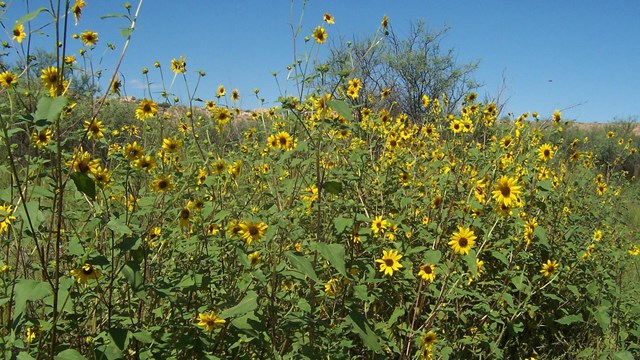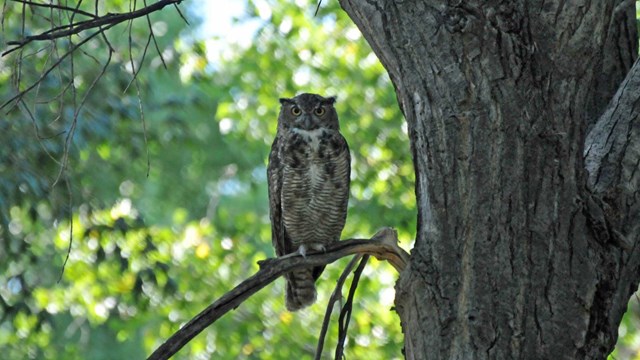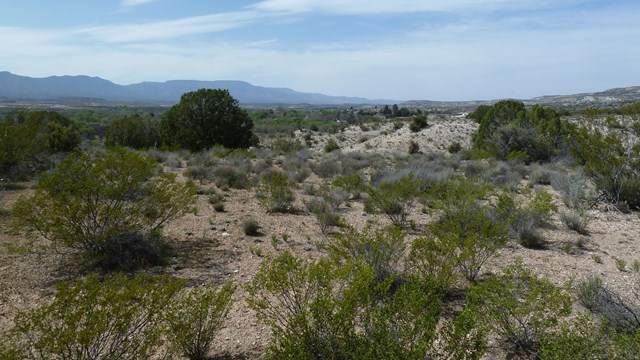|
The great walls of the Mogollon Rim rise several thousand feet above the Verde Valley, marking a major ecosystem boundary that divides the southwest. Above the rim, up on the Colorado Plateau, the land is covered by ponderosa and juniper, volcanoes and lava flows, and the fossil forests of the Painted Desert. To the south, well below the rim, lie the dry basins of the Sonoran Desert, the most biodiverse desert on the planet.

USGS/EPA At Tuzigoot you can see numerous species of plants, such as mesquite, catclaw, and saltbush, which have adapted to life in an arid environment; due to the micro-habitats provided by the river, you'll also see populations of moisture-loving plants. The monument is also home to dozens of animals, from resident deer and mountain lions to migratory birds and insects. What you'll see depends on when you visit and how lucky you are - keep an eye out and let us know what you see! Learn more about Tuzigoot |
Last updated: September 16, 2021



